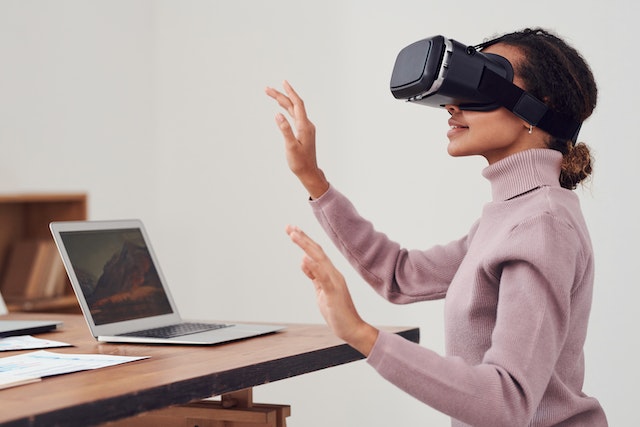
GUEST POST from Janet Sernack
After founding ImagineNation™ in Israel, I invested a year of my time and considerable money in taking what I thought were smart risks to invent an experiential business game. This involved collaborating with one of the top game design companies to co-create a live business simulation incorporating innovative gamification elements intending to teach corporations how to be innovative.
To my shock and surprise at the time, my invention initially failed!
Despite being an adult and experiential learning specialist and having designed and facilitated hundreds of corporate learning games for some of Australia’s top 100 companies over twenty-five years. It felt really horrible, and it was a visceral, heartbreaking, shameful and ego-destroying experience that I would not want anyone, anywhere, ever to experience.
Deep Learning Experience
Yet, it became a profound learning experience, enabling me to understand how:
- My imposter syndrome played a significant self-sabotaging role. It did not set me up for success, nor did it set me up for maximising the importance of self-efficacy and self-mastery when on an innovation roller-coaster ride.
- I had not undertaken sufficient research studies to determine if users wanted and were ready to accept such a radical innovation. Nor had I noticed how much the corporate learning market was being disrupted by technology, causing significant time and budget constraints, that I had neglected to address.
- I had not paused long enough to consider, anticipate, plan and mitigate the risks involved in prototyping a viable minimal product in a new market.
- I had not considered the risks involved with collaborating with a new consulting partner and co-facilitator, as well as with a new client. Nor anticipated how to resolve the values conflict that erupted when the project failed.
- I had not fully understood the process involved in iterating and pivoting a new invention and the time it would take to produce a commercially viable product that the market would understand, be ready for, and respond to.
Finally, it seems that I had unconsciously fallen victim to the innovative start-up entrepreneur’s curse – falling in love with my product!
This was generated by my excitement, enthusiasm and energy of the possibilities rather than balancing these courageously and compassionately with the:
- Harsh realities to be innovative.
- Vital role of smart risk-taking and experimentation.
- What ‘fails fast, to learn quickly’ really means at the heart (emotional), head (cognitive) and gut (visceral) levels.
Value of Failing Fast
They say that people need to teach what they need to learn themselves.
This valuable failure enabled me to invest the next ten years in learning to make sense of innovation and what it means to be innovative, including:
- Helped me develop self-efficacy, trust my inner knowing and judgement, and make a stand for myself in the face of opposition and criticism I often received when presenting at a global conference on the people side of innovation, especially by process engineers.
- Investing more attention, time in iterating and pivoting, testing and validating the two-day business simulation MVP to make it more tangible, simpler and teachable.
- Acknowledging that technology had accelerated sufficiently to accept that the original creative idea of a simple hybrid board game was the most valuable commercial option that could make the difference I wanted to make in the world.
- Becoming more patient, self-compassionate, and courageous in smart risk-taking and leading, coaching, and engaging in team innovation and continuous learning through various innovation, entrepreneurial and intrapreneurial learning initiatives.
Iterating and Pivoting
I iterated, pivoted, and refined my intellectual property by presenting and bespoking the Coach for Innovators, Leaders and Teams Certified Program™ for over twelve years to global change-makers.
Most importantly, I reined in my competitive, risky and restless saboteur and focused on doing just one thing, which has finally morphed into a book, supported by a board game to teach people how to be innovative and develop an innovation mindset.
Taking Risks
In the fog of a globalised, disrupted, unpredictable and increasingly uncertain world, no innovation can progress, and no one can be innovative without smart risk-taking.
No innovation can improve without rigorous experimentation, where learning mainly happens by doing things to explore, discover, and know what not to do.
Research has shown that most successful new business ventures abandoned their original business strategies when implementing their initial plans, learned what would and would not work in the market, and conserved sufficient resources to have a second or third stab at getting it right.
Trial and Error and Cause and Effect
Innovation is a never-ending, risky, adaptive process involving trial and error and understanding cause and effect.
Because people are fearful of making mistakes and the negative consequences of failure, innovation requires leadership to develop both foresight and prospection skills to:
- Empower and enable them to paradoxically take both a strategic and systemic perspective and a human-centred approach.
- Equip them to be innovative when designing business ventures and transformation initiatives that deliver commercially viable outcomes to successfully improve the quality of people’s lives that are appreciated and cherished.
Risk-taking is a Choice
In most businesses and organizations, innovation involves taking considerable risks, especially if seeking to enter a new market with a new product. It is compounded and resisted by many people in organizations because they are too focused on personal survival, personal gain, short-term gain and shareholder return.
Unfortunately, many organizations end up, paradoxically, undermining their organization’s capacity to be innovative, adapt, innovate and grow. Mainly due to their people being disengaged, resistant to change, lacking agency and being held back by bureaucracy and hierarchy that is averse to smart risk-taking and experimentation.
The Future is Permissionless
Because most people generally do not have permission, and are not allowed to make mistakes. They are not encouraged to try new things, so they become risk-averse, avoidant, oppositional and conventional, and don’t feel safe in deviating from the accepted way of doing things.
This is commonly known as the ‘status quo’ and drives people to comply with ‘what is’ (even when it no longer matters) and not apply their human ingenuity, be innovative and create new inventions from ‘what could be’ possible and through smart risk-taking to partner with AI in delivering innovative solutions in a disruptive world of complexity and unknowns.
Image Credit: Unsplash
![]() Sign up here to join 17,000+ leaders getting Human-Centered Change & Innovation Weekly delivered to their inbox every week.
Sign up here to join 17,000+ leaders getting Human-Centered Change & Innovation Weekly delivered to their inbox every week.



 Drum roll please…
Drum roll please…





 The reality is that design and innovation are one and the same. Innovation is all about people. Innovation is about imagining, designing and developing meaningful solutions for people’s needs and wants. As designers, we are trained in three dimensions: human science (desirability), business (viability) and technology (feasibility). In the projects my global design team works on at PepsiCo, we connect these three dimensions to create products, brands, experiences and services that are relevant to the communities we design for. We call this approach “design”; the world often calls it “innovation.”
The reality is that design and innovation are one and the same. Innovation is all about people. Innovation is about imagining, designing and developing meaningful solutions for people’s needs and wants. As designers, we are trained in three dimensions: human science (desirability), business (viability) and technology (feasibility). In the projects my global design team works on at PepsiCo, we connect these three dimensions to create products, brands, experiences and services that are relevant to the communities we design for. We call this approach “design”; the world often calls it “innovation.”